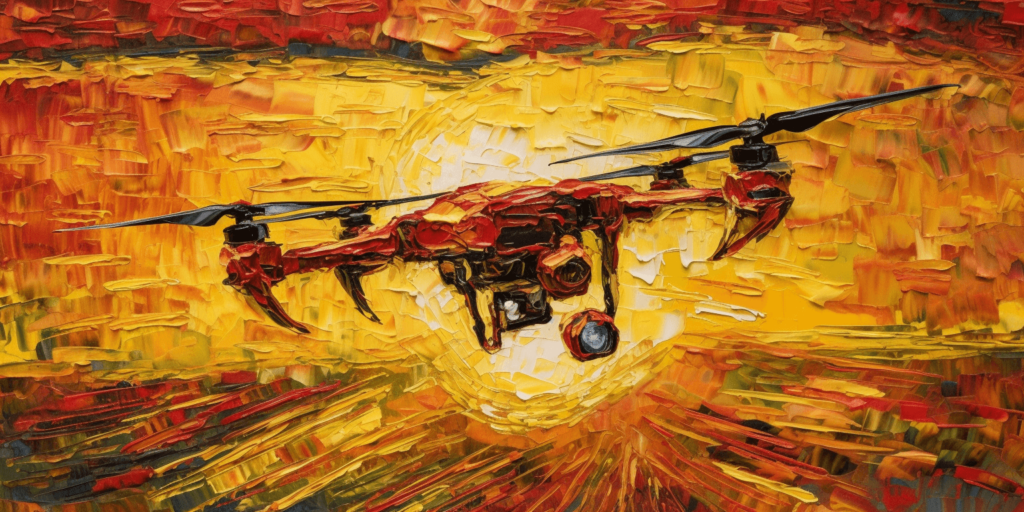The world of agriculture is constantly evolving, and one of the most significant advancements in recent years has been the adoption of drone technology. As farmers look for ways to increase efficiency and optimize crop yield, drones have emerged as a powerful tool in precision agriculture. In this article, we will explore the benefits of drone technology in precision agriculture, discussing how these aerial devices are revolutionizing farming practices and boosting crop yield.
The Evolution of Precision Agriculture and the Emergence of Drone Technology
Precision agriculture has come a long way since its inception, with technology playing a vital role in its evolution. In the past, farmers relied on traditional methods, such as visual inspection and manual data collection, to make informed decisions about their crops. However, these approaches were often time-consuming and prone to errors.
With the advent of technologies like GPS, remote sensing, and data analytics, precision agriculture has gained momentum, enabling farmers to manage their farms with increased efficiency and accuracy. Among these innovations, drone technology has emerged as a powerful tool for precision agriculture, providing unparalleled access to real-time, high-resolution data.
The Impact of Drone Technology in Agriculture
Drone technology has had a profound impact on agriculture, transforming various aspects of farming practices. By utilizing drones, farmers can now access detailed information about their crops and make data-driven decisions, leading to improved efficiency, productivity, and crop yield. Let’s explore some of the key areas where drone technology has made a significant difference in agriculture:
Increased Efficiency and Productivity
Drones have the ability to cover large areas of farmland quickly and efficiently, enabling farmers to monitor their crops in a fraction of the time it would take using traditional methods. This increased efficiency translates into higher productivity, as farmers can make timely interventions to address potential issues, ultimately leading to better crop performance.
Enhanced Data Accuracy and Decision-Making
Equipped with advanced sensors and cameras, drones can capture high-resolution aerial images and collect precise data on various crop parameters. This wealth of information allows farmers to analyze their crops in greater detail and make informed decisions about irrigation, fertilization, and pest control, significantly improving the overall management of their farms.
Improved Crop Health and Yield
By providing farmers with accurate, real-time information, drone technology helps them identify potential issues, such as nutrient deficiencies, water stress, and pest infestations, early on. This early detection allows for prompt intervention and targeted treatments, resulting in healthier crops and higher yields.
The Value of Drones in Agriculture
The value of drones in agriculture extends beyond just data collection and crop monitoring. Drones can also be used to optimize various farming operations, such as planting, irrigation, and pesticide application, contributing to a more efficient and sustainable agricultural system. By integrating drone technology into their farming practices, farmers can maximize their return on investment and ensure the long-term success of their business.
Uses of Drones in Precision Agriculture
Drones have a wide range of applications in precision agriculture, making them an indispensable tool for modern farmers. Here are some of the key uses of drones in agriculture:
Aerial Imaging and Data Collection
Equipped with high-resolution cameras, drones can capture detailed aerial images of farmland, providing valuable insights into crop health, growth patterns, and potential issues. This data can be used to create maps that help farmers identify areas that require attention, such as those affected by nutrient deficiencies or water stress.
Crop Health Monitoring
Drones equipped with multispectral or hyperspectral sensors can assess crop health by analyzing the light reflected by plants. These sensors detect variations in light absorption and reflection patterns, which can indicate issues such as disease, pest infestation, or nutrient deficiency. By monitoring crop health regularly, farmers can take timely action to address problems and minimize crop loss.
Irrigation Management
Drones can help farmers optimize their irrigation systems by identifying areas with insufficient or excessive water supply. Using thermal imaging, drones can detect temperature variations in the field, which can indicate water stress or over-irrigation. This information allows farmers to adjust their irrigation practices, ensuring that crops receive the right amount of water and reducing water waste.
Planting and Seeding
Some drones are designed to carry and disperse seeds, offering a faster and more efficient alternative to traditional seeding methods. This technology can be particularly useful for planting cover crops, which can improve soil health and protect against erosion. By automating the seeding process, drones can save farmers time and labor, while also improving the uniformity of seed distribution.
Pest and Disease Control
Drones can play a crucial role in pest and disease control by providing early detection and targeted treatment. Using advanced sensors and cameras, drones can identify areas affected by pests or diseases and help farmers apply the appropriate treatments. This targeted approach reduces the need for widespread pesticide use, promoting a more sustainable and environmentally friendly farming practice.
Pros and Cons of Drones in Agriculture
As with any technology, it’s essential to weigh both the advantages and disadvantages of using drones in agriculture. This section provides an expanded overview of the pros and cons associated with the use of drones in agriculture to help farmers make informed decisions about adopting this technology.
Advantages: Enhanced Efficiency, Data-Driven Decision-Making, and Environmental Benefits
- Enhanced Efficiency: Drones can significantly increase efficiency in agricultural operations by automating tasks like crop monitoring, data collection, and pesticide application. This automation reduces labor costs and allows farmers to manage their farms more effectively.
- Data-Driven Decision-Making: By providing farmers with precise and real-time data on crop health and field conditions, drones enable more informed decision-making. This data-driven approach allows farmers to optimize various aspects of their operations, such as irrigation, fertilization, and pest control, ultimately improving crop yield and profitability.
- Environmental Benefits: Drone technology can contribute to more sustainable and environmentally friendly farming practices by enabling targeted application of resources like water, fertilizers, and pesticides. This targeted approach reduces the overuse of these resources and minimizes the negative impacts on the environment, such as water contamination and soil degradation.
- Improved Crop Management: Drones provide farmers with a comprehensive view of their fields, helping them identify and address issues that might have gone unnoticed with traditional monitoring methods. This bird’s-eye perspective allows for improved crop management and more timely interventions, leading to healthier crops and higher yields.
- Time Savings: Drones can cover large areas of farmland in a short period, significantly reducing the time required for tasks like crop monitoring, data collection, and pesticide application. This time savings allows farmers to focus on other important aspects of their farming operations, improving overall efficiency.
- Enhanced Worker Safety: Using drones for tasks like aerial inspections and pesticide application can help reduce the risks associated with manual labor, such as exposure to chemicals and potential accidents. By automating these tasks, drones contribute to a safer work environment for agricultural workers.
- Scalability: Drones offer a scalable solution for farmers, as they can be easily deployed across farms of varying sizes and types. This versatility makes drone technology accessible to a wide range of agricultural operations, from small family farms to large commercial operations.
Disadvantages: Legal and Regulatory Challenges, Privacy Concerns, and Initial Investment
- Legal and Regulatory Challenges: The use of drones in agriculture is subject to various legal and regulatory requirements, which can vary by region or country. Navigating these requirements can be complex and time-consuming for farmers, potentially limiting their ability to fully utilize drone technology.
- Privacy Concerns: The use of drones for aerial imaging and data collection can raise privacy concerns, as they may inadvertently capture images or data from neighboring properties. Farmers must be mindful of these concerns and take appropriate measures to protect the privacy of others while using drones.
- Initial Investment and Maintenance Costs: Although drones can lead to cost savings in the long run, the initial investment required to purchase and implement drone technology can be a barrier for some farmers. Additionally, there may be ongoing maintenance and repair costs associated with drone use, as well as the need for training and certification for drone operators.
By carefully considering both the advantages and disadvantages of using drones in agriculture, farmers can make informed decisions about whether to incorporate this technology into their operations. As drone technology continues to advance and become more accessible, it has the potential to revolutionize agriculture and contribute to a more sustainable and efficient food production system.
The Future of Drone Technology in Agriculture
As drone technology continues to advance, its applications in agriculture are expected to expand and become even more sophisticated. Here are some of the exciting developments we can anticipate in the future of drone technology in agriculture:
Advanced Sensors and Artificial Intelligence
The integration of advanced sensors and artificial intelligence (AI) in drones will enable even more accurate data collection and analysis. AI-powered drones can learn from the data they collect, allowing them to detect patterns and anomalies more effectively, and ultimately, improve decision-making in agricultural management.
Collaborative Drone Swarms
The development of drone swarms, where multiple drones work together in a coordinated manner, can further enhance efficiency and productivity in agriculture. Drone swarms can cover larger areas in less time and carry out various tasks simultaneously, such as crop monitoring, pest control, and irrigation management.
Integration with Other Farming Technologies
The future of drone technology in agriculture will likely involve its integration with other farming technologies, such as robotics, autonomous vehicles, and the Internet of Things (IoT). This seamless integration will facilitate a more connected and data-driven approach to agriculture, allowing farmers to optimize their operations in real-time and maximize their crop yield.
How Drone Technology Helps Farmers and Changes Jobs in Agriculture
The increased use of drone technology in agriculture is not only transforming farming practices but also reshaping the job landscape in the industry. Here are some ways drone technology is helping farmers and changing jobs in agriculture:
New Employment Opportunities
The growing demand for drone technology has led to the creation of new job opportunities in agriculture, such as drone operators, data analysts, and UAV (unmanned aerial vehicle) technicians. These roles require specialized skills and knowledge, opening up new career paths for individuals interested in both agriculture and technology.
Skillset Requirements
As drone technology becomes more prevalent in agriculture, farmers and agricultural workers will need to acquire new skills to stay competitive in the job market. This includes learning how to operate drones, interpret aerial data, and manage drone-related software and applications.
The Role of Drone Operators and Data Analysts
Drone operators and data analysts play a crucial role in harnessing the potential of drone technology in agriculture. Drone operators are responsible for flying the drones and capturing the necessary data, while data analysts process and interpret the collected data, providing valuable insights to farmers. These professionals work together to help farmers make data-driven decisions and optimize their farming practices.
By understanding and embracing the changes brought about by drone technology, agricultural professionals can adapt to the evolving landscape and ensure a successful and sustainable future for their industry.
Agricultural Drones and Sustainability
The use of drones in agriculture has the potential to significantly enhance sustainability by promoting more efficient and environmentally friendly farming practices. Here are some ways in which agricultural drones contribute to sustainability:
Environmental Benefits
Drones enable more targeted application of fertilizers, pesticides, and water, reducing the overall environmental impact of these agricultural inputs. By minimizing the over-application of chemicals and optimizing irrigation practices, drones can help protect soil health, prevent water contamination, and reduce the release of greenhouse gases.
Resource Conservation
By providing accurate and real-time data on crop health and field conditions, drones help farmers optimize their use of resources, such as water, fertilizers, and pesticides. This not only saves farmers money but also conserves valuable natural resources and contributes to a more sustainable agricultural system.
Climate Resilience
Drones can also play a crucial role in helping farmers adapt to climate change by monitoring and managing the effects of extreme weather events, such as droughts, floods, and heatwaves. With the data collected by drones, farmers can make informed decisions on how to protect their crops from climate-related risks, ensuring the long-term resilience of their farming operations.
In conclusion, the integration of drone technology in precision agriculture has proven to be a game-changer, offering numerous benefits such as improved efficiency, cost savings, enhanced data accuracy, and increased crop health and yield. By embracing this cutting-edge technology, farmers can stay ahead of the curve and reap the rewards of a more productive and sustainable farming operation.
If you’re interested in learning more about the potential of drone technology in agriculture and how to implement it in your own farming business, we encourage you to visit Soaring High: A Comprehensive Guide to Building and Growing Your Drone Business. This in-depth guide will provide you with valuable insights and resources to help you elevate your agricultural operations to new heights.
For any drone-related services, don’t hesitate to contact Blue Falcon Aerial. Our team of experts is ready to assist you in harnessing the power of drone technology to boost your crop yield and transform your farming practices.




